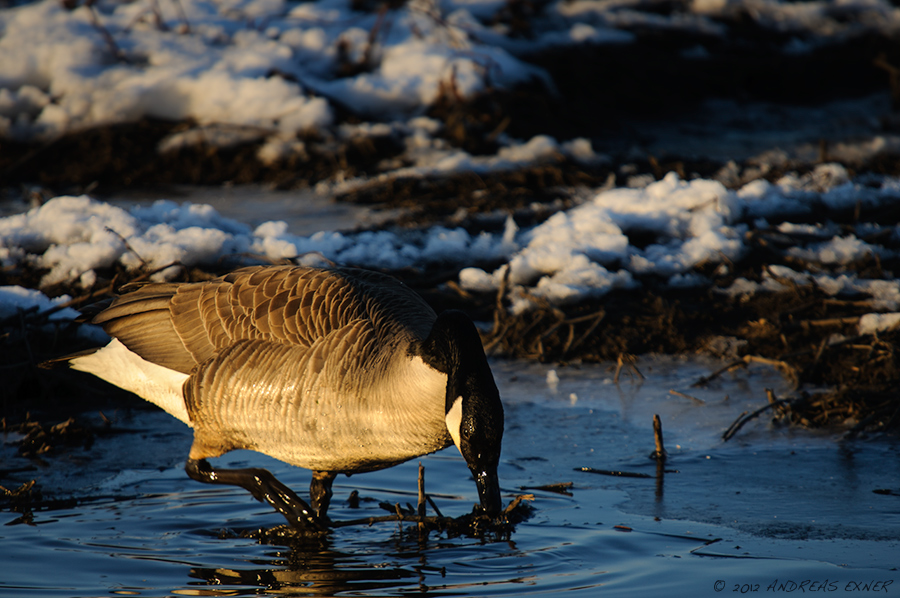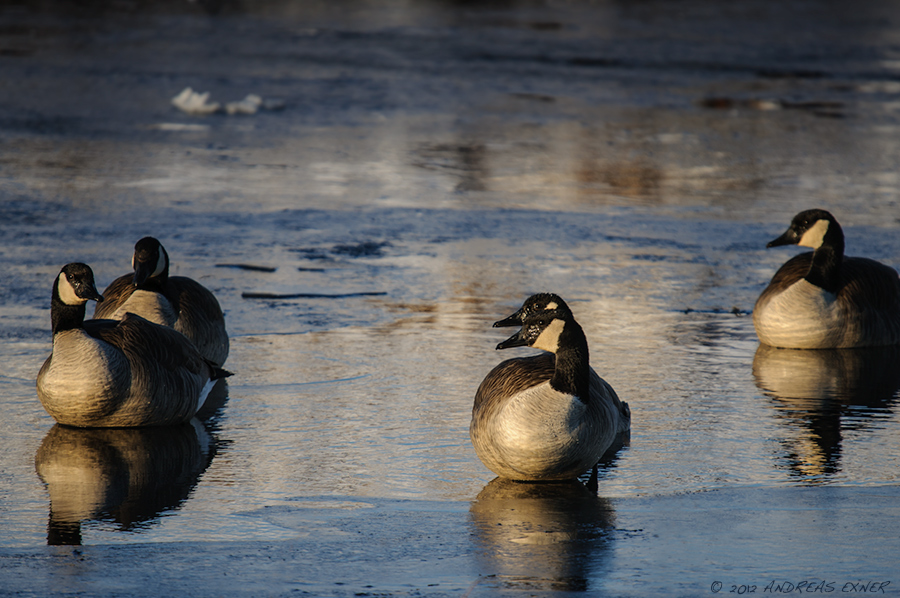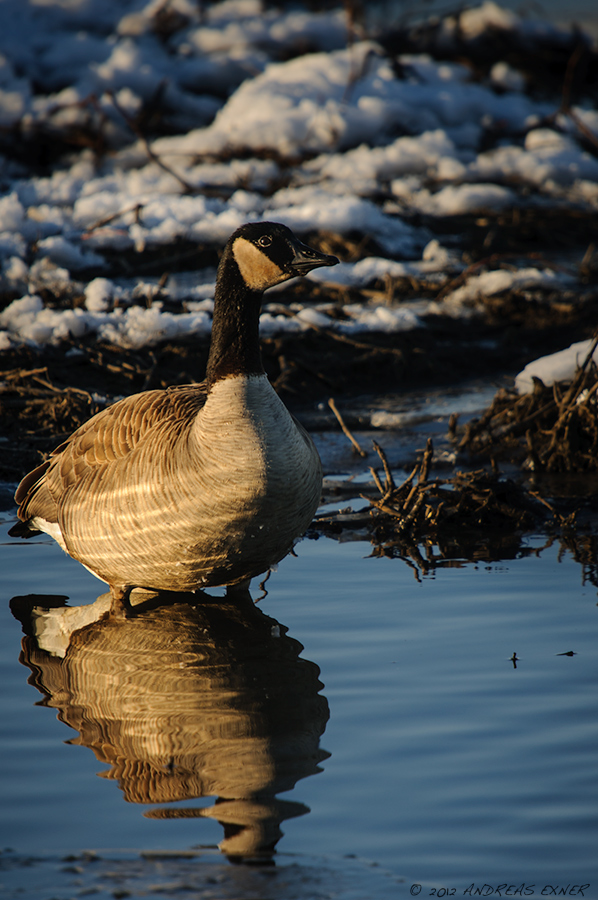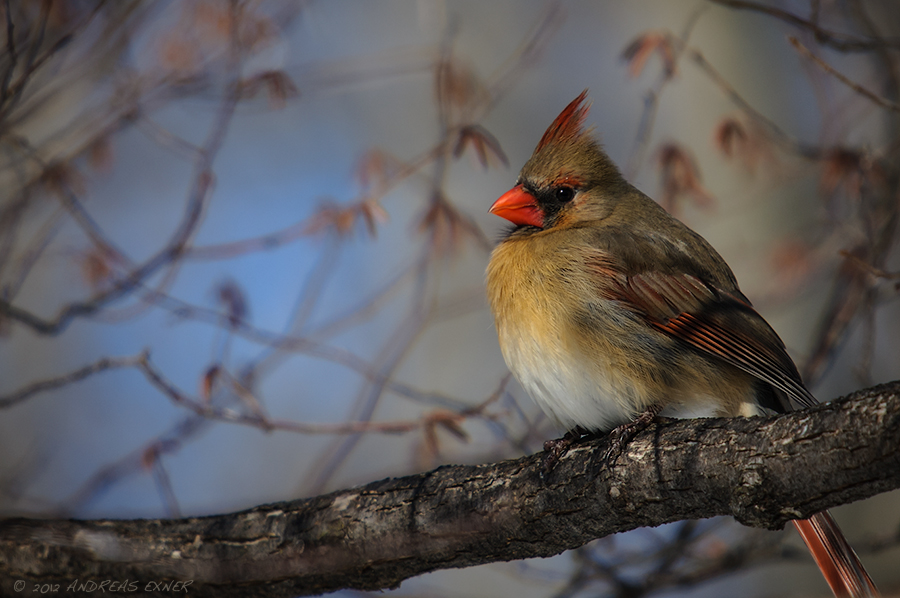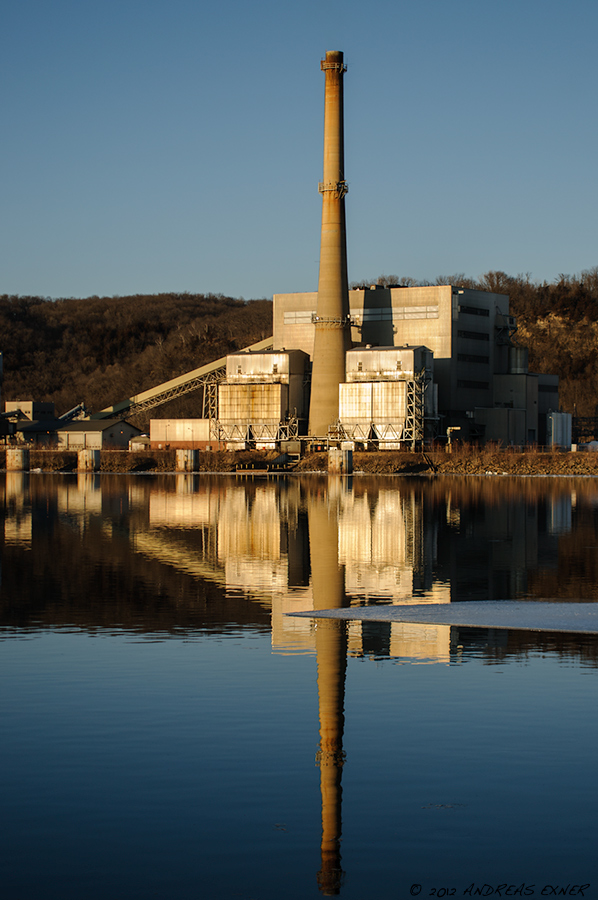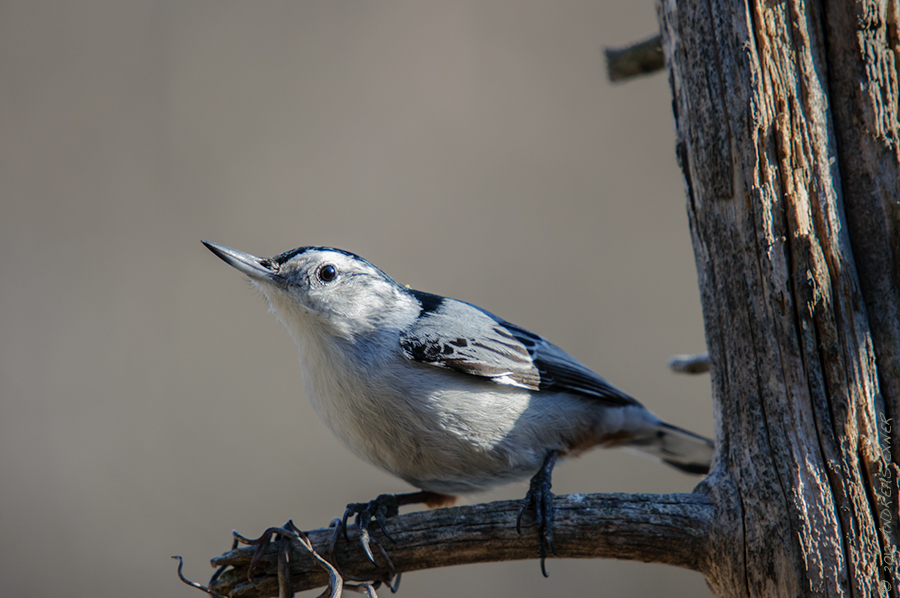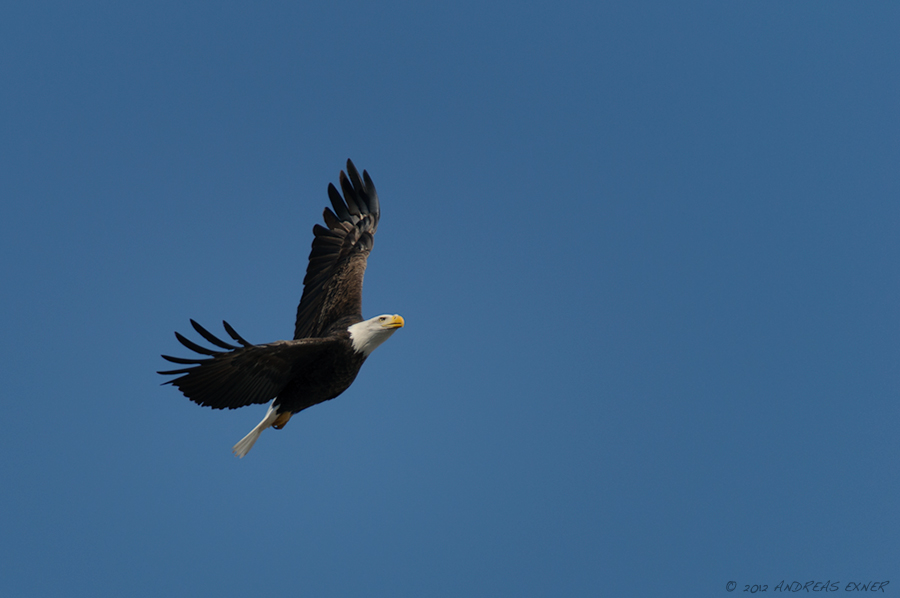
- Nikon D300s, Sigma 50-500mm / f4.5-6.3 APO DG HSM
The best time of the year to watch Bald Eagles here along the Mississippi is during the winter, when ice covers the river and the eagles gather at the dams. Locks and dams have been built for navigation, not for flood control, and they are sometimes the only places that are not frozen over and allow the eagles to feed during the cold season. Because of the mild winter we didn't see many eagles in December and January but opportunities have been good during the last few weeks.
The image above was made less than a mile south of dam #11 in Dubuque, Iowa at the 16th Street Detention basin. This pond has seen lately some heavy construction as part of a restoration project that will improve flood protection in Dubuque. Despite still ongoing landscape work many birds took already possession of the pond, located just a stone throw away from the Mississippi.
My buddy Dave made some nice shots there of a group Great Blue Herons last Saturday. I stopped at the pond again on Sunday to study the light for future "shooting adventures". The visitor access is on the north side. I can tell, the layout hasn't been designed by a photographer… ;-) Oh well, we have to be flexible, right? I went to the south side, an industrial area and quite a bit above the water level (Yaiks!). However, having the sun in my back was so much better. Four eagles were sitting in one corner of the pond that was still covered with ice. Once in a while they took a turn and were circling over the lake. If you can manage to keep the wires of a power supply line that crosses the pond out of your frame (Yaiks again! ;-) ) you may get lucky and make a click like the one above or even better. I should not complain too much. I'm happy for the people in the city that don't have to go too far for watching some wildlife. Right now everything looks still "bare naked" at the pond while construction is still not finished. But seeing already many ducks, geese, herons, gulls, and some eagles is a good indicator that this pond will become a great place for future bird watching and photography experiences.



